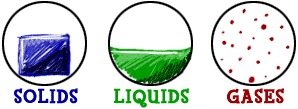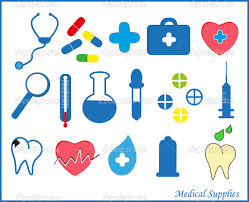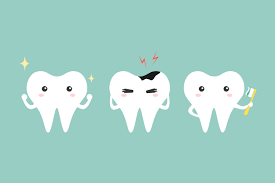
Introduction:
The different states of matter are a foundational concept used in science as well as present in the world around us. Discussions surrounding matter take place in multiple areas of scientific study. Scientific study then transfers into Modern day professional life. As you read further in this blog, you will discover the existence of multiple states of matter in Chemistry and Biology. Additionally, examples of these substances in the dental profession will be identified and discussed. As you read this blog, start asking yourself what states of matter exist around you!
Solids, Liquids and Gases: Chemistry

Solid: State of matter characterized by particles arranged such that their shape and volume are relatively stable. Example: Ice and rocks
Liquid: An amorphous (non-crystalline) form of matter between a gas and a solid that has a definite volume, but no definite shape. Example: Water
Gases: State of matter consisting of particles that have neither a defined volume nor defined shape. Example: Air
Chemistry vs. Biology:
Chemistry is “the branch of science that deals with the identification of the substances of which matter is composed” (dictionary.com, 2016). A state of matter is defined as one of the ways in which matter can interact with itself to form a homogeneous phase. Within Chemistry there are 3 states of matter, a solid, liquid and a gas, but within Biology there are 5 states of matter. Biology is the study of living things. They still use solids, liquids and gases but they also use plasmas and Bose-Einstein (BEC). Everyone is familiar with solids, liquids and gases but what are plasmas and Bose-Einstein condensate? A plasma is “the colorless fluid part of blood, lymph, or milk, in which corpuscles or fat globules are suspended” (states of matter, 2014). The next state of matter that is not very common but is also used in Biology, Bose-Einstein condensate (BEC), “is a state of matter of a dilute gas of bosons cooled to temperatures very close to absolute zero” (BEC life science, 2016). “Bose-Einstein condensate (BEC) is a man-made gas and according to the research that has been done is newer to the biology states of matter considering it is a man-made gas”(Live science, 2015) . Because it is man-made it is not talked about much. Biology seems to like to focus on solids, liquids, gases and plasmas. As you can see, both chemistry and biology use states of matter. The states of matter are a very large part of both chemistry and biology content.
States of Matter in Modern day jobs:

The states of matter don’t just show up in chemistry and biology, they also show up in modern day medical jobs. To relate it to me personally I work in a dental office as a dental assistant. Within my everyday work day, I deal with different solids, liquids and gases all day. We use N2O (Nitrous Oxide gas) which is also known as laughing gas. Many, if just about all, dental offices use N2O because it helps relax patients with anxiety. We also use different cleaning solutions like sodium hypochlorite (bleach). When we do a root canal procedure we use sodium hypochlorite to clean and disinfect the inside of the tooth. After cleaning the canals, a material called gutta percha is placed inside the canal with a sealer material. Gutta percha is a polyterpene, a polymer of isoprene, or polyisoprene. This solid is a latex rubber that crystallizes making the material more rigid. The sealer material is a liquid paste in dental world known as epoxy-amine resin. It acts as a cement to create a tight seal in the canal and also has antimicrobial properties to lower the amount of germs in the canal space. My last example is the metal instruments that we use every day. Dental instruments use a variety of different solids. From diamond coated instruments to stainless steel instruments, chromium, copper, titanium and nickel may be found. The various states of matter are used in many different scenarios within the dental office.
Real life application:

I plan on studying dental hygiene in the future. With this occupation, I will be exposed to many solids, liquids, and gases. The teeth and gum tissues are the main solids within this job. I will be working around blood and saliva which present in liquid form. Like I’ve stated previously, N2O may be used for anxious patients. The states of matter are used in so many different materials in the dental field. “The silver fillings that are used are made of amalgam, which is mercury and powdered alloy of silver, tin and copper” (Intelligent Dental, 2011). The solid element mercury is used to bind the alloy particles together to form a strong, durable, solid filling. Another controversial substance related to dental care is fluoride. Fluoride comes in a variety of forms. The most common are stannous fluoride and sodium fluoride. Fluoride is naturally occurring in different levels in water sources. The debate continues as to whether or not fluoride should be added to drinking water and is determined at state and local levels.
As you can tell, the states of matter are important from both an academic stand point and in our everyday lives. Without the states of matter, the world we know today would not be the world we would be living in. When you think about it everything in this world is made up of the different states of matter. The world of dentistry as mentioned is also a vast entity of states of matter. It’s fascinating to take a closer look at the many states of matter and how they interact to heal and repair the human body. Matter is everywhere and influences everything we do.
Citations:
Intelligent Dental. (n.d.). Retrieved November 14, 2016, from http://www.intelligentdental.com/2011/10/12/basic-dental-instruments-2/
States of Matter. (n.d.). Retrieved November 14, 2016, from https://www.chem.purdue.edu/gchelp/atoms/states.html
States of Matter: Bose-Einstein Condensate – Live Science. (n.d.). Retrieved November 14, 2016, from http://www.livescience.com/54667-bose-einstein-condensate.html
The definition of chemistry. (n.d.). Retrieved November 14, 2016, from http://www.dictionary.com/browse/chemistry
I like you layout of your blog. It is easy to understand and i like how you tied your personal job to your subject of states of matter. Your examples in being a dental hygienist and all of the things you use on a daily basis made it easy to relate 🙂 Nice job!
LikeLike
I think you did a great job on your blog. how you did the introduction and split up the different sections with pictures looks really nice and well put together. reading and looking at your blog looks like you really took your time on it. also good job with your citations.
LikeLike
I love your introduction to the blog and how you explain the states of matter. I liked how you added you job and explained it to the reader. you dint just add a random job you didn’t know to much about, you added something that you knew.
LikeLike